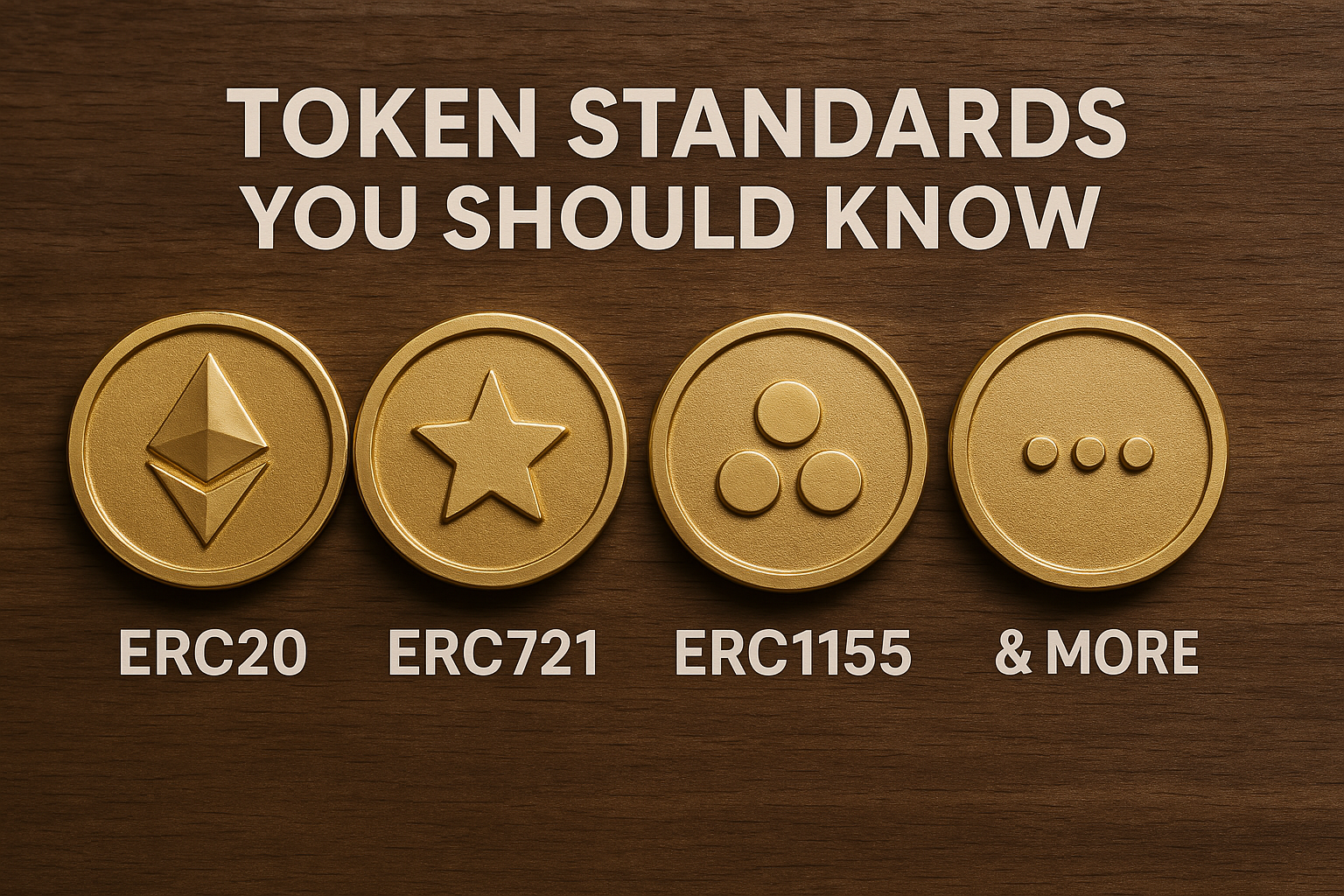Token Standards You Should Know in 2025: ERC20, ERC721, ERC1155 & Beyond for AI Developers and the Crypto Industry

If you're part of an AI development company, working with AI developers, or involved in AI software development, you're likely aware that blockchain is playing an increasingly crucial role in modern technology stacks. Token standards such as ERC20, ERC721, and ERC1155 are powering not just crypto transactions, but also applications of AI-based technologies across industries. These standards form the foundation of smart contracts, digital assets, decentralized finance (DeFi), and NFTs (Non-Fungible Tokens). In 2025, understanding these token protocols is essential for anyone working at the intersection of AI and industry.
Let’s dive into what these standards are, why they matter, and how they connect with emerging tech ecosystems.
What Are Token Standards?
Token standards are predefined rules and functions that govern how tokens behave on a blockchain. The Ethereum network, for example, has popularized several token standards, with ERC standing for Ethereum Request for Comments. These standards ensure that tokens created on Ethereum can interact seamlessly with wallets, exchanges, and dApps.
1. ERC20: The Foundation of Fungible Tokens
ERC20 is the most widely used token standard for fungible tokens. Fungible tokens are identical and interchangeable—one token is exactly the same as another.
Key Features:
Balance tracking
Transferability
Approval and allowance systems
Use Cases:
Cryptocurrencies like USDT and LINK
Governance tokens
DeFi applications
Relevance to AI Developers:
AI platforms using token economies for data sharing, training incentives, or access management often base their native tokens on ERC20.
2. ERC721: The Birth of NFTs
ERC721 introduced the concept of non-fungible tokens (NFTs)—unique digital assets with distinct properties and identifiers.
Key Features:
Unique token IDs
Ownership verification
Metadata association
Use Cases:
Digital art
Gaming assets
Real estate tokens
AI Integration:
AI-generated art and algorithmic collectibles are increasingly minted as ERC721 NFTs. AI developers exploring generative models can tokenize their outputs securely.
3. ERC1155: The Multi-Asset Standard
ERC1155 was developed to support both fungible and non-fungible tokens within a single contract, optimizing gas fees and improving functionality.
Key Features:
Batch transfers
Shared logic for multiple token types
Improved efficiency over ERC721
Use Cases:
Blockchain gaming (items, currency, characters)
Multi-token NFT marketplaces
Cross-industry tokenization
AI and Industry:
Companies deploying AI in gaming or e-commerce can benefit from ERC1155’s flexibility, especially when integrating multiple asset types within one application.
4. Other Emerging Token Standards to Watch
ERC777:
An advanced fungible token standard with improved functionality over ERC20, including hooks that let contracts react to token movements.
ERC4626:
A standard for yield-bearing vaults, critical for DeFi protocols. Relevant to AI-powered DeFi management tools.
ERC998:
Allows for composable NFTs—NFTs that can own other NFTs and ERC20 tokens. This opens the door for complex AI-designed virtual assets and digital identities.
People Also Ask: FAQs About Crypto and Token Standards
What crypto will boom in 2025?
While no prediction is certain, projects that integrate AI, scalability, and strong tokenomics, like Ethereum, Solana, Render, and newer AI-based cryptos, are attracting attention. Token standards like ERC1155 may underpin future metaverse and gaming tokens.
Can you make passive income with cryptocurrency?
Yes. Staking ERC20 tokens, yield farming, and lending through DeFi platforms remain top passive income methods. ERC4626 is making yield vaults easier to use and integrate.
Can you make $100 a day with crypto?
It’s possible with a diversified strategy and enough capital. Combining high-yield DeFi tokens, NFT royalties, and staking rewards—often built on ERC standards—can help reach that goal.
How AI Developers Can Leverage Token Standards
Data Monetization: Create ERC20 tokens to represent access to proprietary datasets.
Reward Systems: Use ERC721 or ERC1155 to reward users with unique digital assets based on AI interactions.
Secure Access: Implement token-gated access to AI APIs or models.
Reputation Systems: Develop composable NFTs (ERC998) that track developer reputation or project contributions.
Integrating blockchain with AI isn't just about hype. It’s about creating transparent, traceable, and secure systems that benefit users and businesses alike.
Why Token Standards Matter for Industry
From supply chain to healthcare, tokenization backed by standardized protocols enhances traceability and automation. Businesses looking to adopt AI-based technologies can use these standards to tokenize assets, verify digital identities, and automate transactions.
This is especially relevant for AI and machine learning applications that require secure data sourcing and proof of contribution.
Disclaimer
This blog is intended for informational purposes only and does not constitute financial, legal, or technical advice. Always consult with certified professionals before investing or building blockchain-based solutions. Token standards and technologies evolve rapidly; do your own research (DYOR) to stay updated.
Conclusion
Token standards like ERC20, ERC721, and ERC1155 are much more than coding templates—they’re the backbone of a tokenized, decentralized, and intelligent future. Whether you're an AI development company, a blockchain engineer, or a business leader exploring the edge of AI and industry, understanding these token standards gives you a head start.